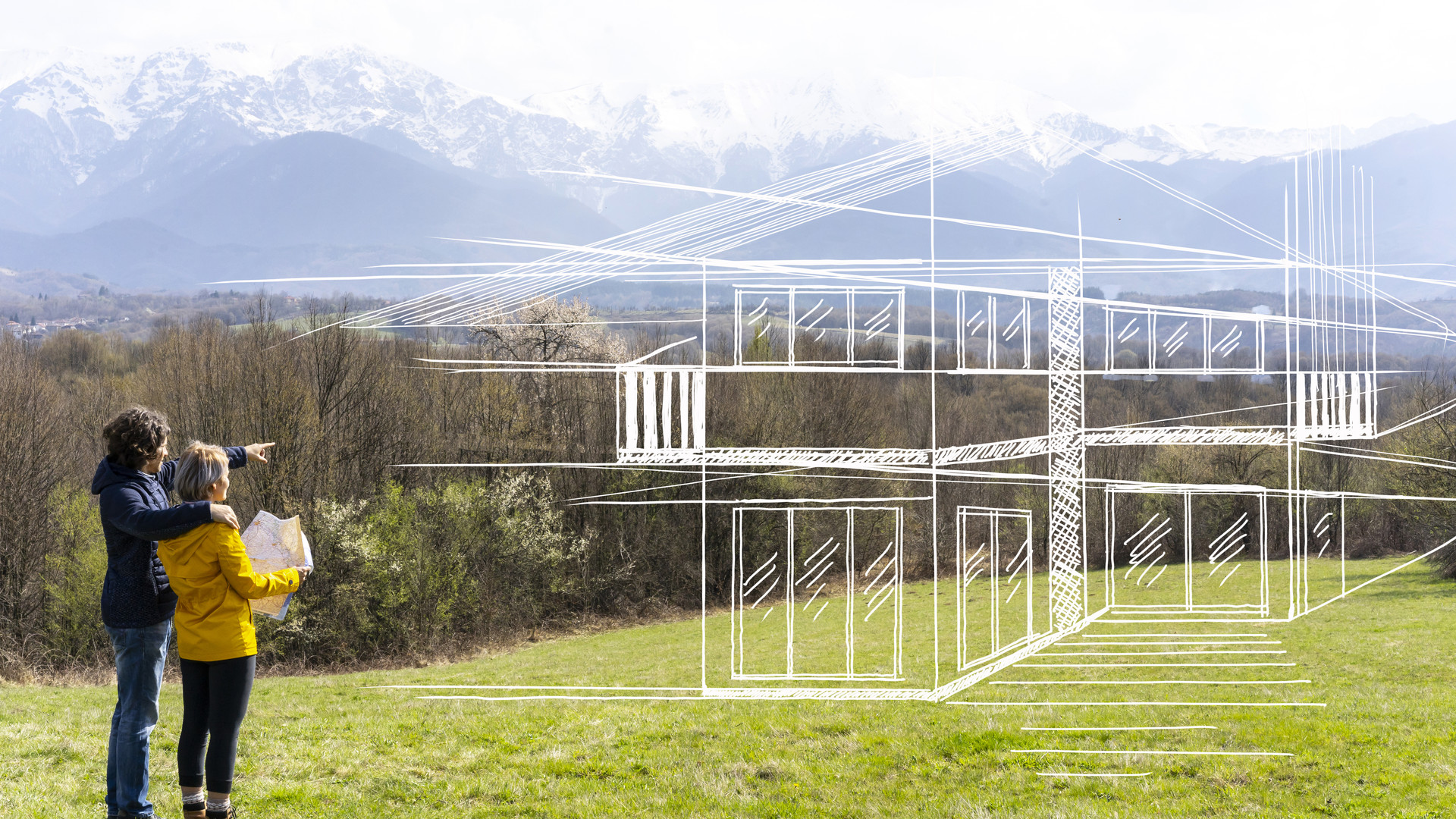Why a Construction-to-Permanent Loan Might Be Right for You
Construction costs have skyrocketed due to a confluence of factors, including demand as more people move to less-populated areas, labor shortages driving up wages and supply chain woes. The National Association of Home Builders (NAHB) has seen a steady climb in building materials prices that have added up to an astonishing 33% increase since the start of the pandemic.
Of course, that’s not the only thing going up right now as rising interest rates steadily boost mortgage rates. That makes locking in your funding at an attractive rate more desirable than ever, since further anticipated hikes translate into higher monthly payments that could stretch – or break – a budget. The last thing you want is to be faced with the situation that’s sidelining many would-be homeowners who have found their payment will balloon so much when construction eventually ends that they will no longer be able to afford the dream house they’ve been patiently waiting for.
Fortunately, there’s an answer to that nightmare scenario – a construction-to-permanent loan that can lock in your loan at today’s rates. If you’re thinking about building a new home, you’re probably awash in details like square footage, layout and finishes, but nailing down your financing should be your first decision. A construction-to-permanent loan could be a good option. Here’s what you need to know.
What is a construction-to-permanent loan?
Unlike many confusing financial terms, this one is relatively straightforward – it allows you to borrow your building costs now during the construction phase and then convert the financing to a conventional loan (the permanent part) once you’re ready to move in.
During the building period, it functions as a short-term loan that covers all the costs of construction – from the land to the labor, including materials and permits. It streamlines the financial hassles of paying your builder since the contractor and the lender work together to keep payments on schedule.
How does a construction-to-permanent loan work?
With a construction-to-permanent loan, your lender is with you every step of the way. First you’ll work with your mortgage loan officer and builder to create a construction contract outlining the stages and costs to establish the timeline and budget. Your lender can even help you select a contractor or builder with whom they’ve worked on these types of projects if needed.
Once you’ve signed your papers (and locked in that interest rate) your lender will work with the builder and make payments directly to them – called a “draw” – as each stage of construction is completed. They’ll often conduct inspections along the way.
Once the home is complete, the loan will convert to a traditional mortgage – the “permanent” part of this type of loan. Again, since only one signing is involved, you won’t need to requalify or do additional paperwork to get your permanent loan. This typically becomes a conventional 30-year mortgage, although a lender can discuss shorter terms if you prefer.
Who is a construction-to-permanent loan best for?
A construction loan has a number of advantages – chief among them is the fact that you can lock in an appealing interest rate, which is particularly important as it allows you to avoid the uncertainty of payment fluctuations amid climbing rates.
It offers peace of mind in other ways – first, you know the entire process has been vetted to ensure the project is viable as part of securing the loan. And since there’s only one mortgage signing, you don’t have to be concerned that future job situations could make it more challenging to qualify for subsequent financing once the house is complete.
But these benefits mean lenders might be a little choosier about whom they make this type of loan to because there is no collateral associated with it. (In a typical mortgage situation the house itself acts as the collateral should you fail to make payments). So they will tend to look for borrowers with solid finances – including a higher credit score and lower debt-to-income ratio than they might expect for a conventional mortgage. They also might require a larger down payment, which typically can be 20 to 30%, although in some cases a bank like Old National Bank can require as little as 10%.
While rising interest rates are creating some havoc in the market, they still are at near-historic lows which means this could be an ideal time to buy or build a home. Wondering if a construction loan might be right for you? Contact an Old National Mortgage Expert to find out what you need to know to get started on building your dream home – today.
Want to know more about construction to permanent loans? Click HERE to learn more!
